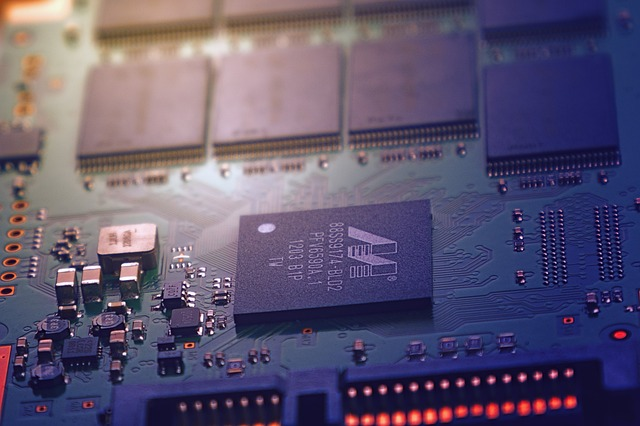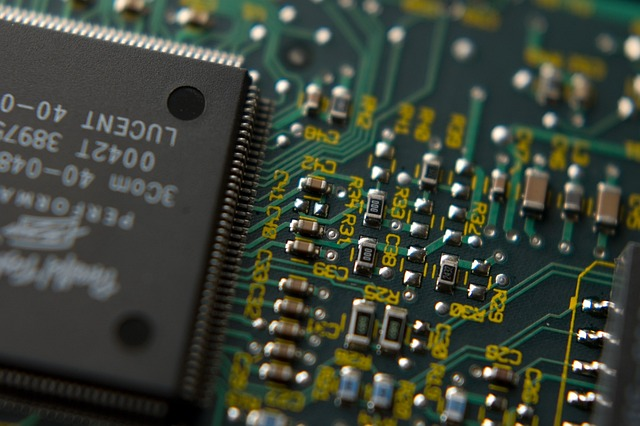Meta Description
Discover China’s progress in producing high-end chips. Learn about its investment, expertise, and infrastructure. Get an in-depth analysis of China’s impact on the global semiconductor industry and future potential.
Introduction
High-end chips, also known as microchips, are tiny electronic components used to control and process information in electronic devices. They are an essential component in the modern world and play a crucial role in many devices, including smartphones, laptops, and servers. As such, the global market for high-end chips is highly competitive, with companies vying for a larger market share.
China has been making significant strides in the semiconductor industry and is quickly becoming a major player in the production of high-end chips. With a rapidly growing domestic market and government support, China has invested heavily in research and development to build a self-sufficient chip industry.
This in-depth analysis will examine China’s capabilities in producing high-end chips, including its infrastructure, investment, and expertise, as well as its strengths and weaknesses. The analysis will also discuss the impact of China’s growing chip industry on the global market and its future potential.
The Importance of Chips in Today’s World
Microchips play a critical role in today’s world and are essential for many devices and technologies functioning. They are used in virtually all electronic devices, from smartphones and computers to automobiles and home appliances. The widespread use of chips in modern society has made them indispensable for many aspects of our daily lives.
One of the most important uses of chips is in the field of computing. Chips are used to process and store data and to carry out complex calculations that allow computers and other digital devices to function.
Another important use of chips is in the field of communications. Chips are used in telecommunications equipment, such as cell phones, to process and transmit data, voice, and video signals. They are also used in developing new technologies, such as 5G networks, which are poised to revolutionize how we communicate and access information.
In addition to their use in computing and communications, chips are critical for many other technologies’ functioning. For example, they are used in automotive systems to control everything from engine management to navigation and entertainment systems. They are also used in healthcare technologies such as medical and wearable technologies.
The widespread use of chips in modern society has made them an increasingly important component of the global economy. The production of chips is a multi-billion dollar industry, and the growth of this industry is surely happening as the demand for new and advanced technologies continues to increase.

China’s Capabilities in Semiconductor manufacturing process
China has rapidly become a major player in the global semiconductor value chain, with significant advancements in producing high-end chips in recent years. From a small and relatively limited industry, China has transformed into a major producer of high-end chips used in various electronic devices and technologies.
One of the key factors contributing to China’s success in chip production is its focus on investment in research and development. The country has invested significantly in advanced technologies and established several research institutes dedicated to developing new chip technologies.
As a result, China has developed its intellectual property in this field and has become a major player in the global market.
Another important factor contributing to China’s chip production success is its strong government support. The government has provided significant financial and regulatory support to the industry and has established several initiatives to support the growth and development of the sector.
This has helped to create a supportive environment for innovation and investment and has enabled the country to build a strong domestic supply chain for the production of chips.
Regarding production capabilities, China has made significant investments in developing advanced manufacturing technologies and production processes. This has enabled the country to produce high-end chips of comparable quality to those produced by other major players in the global market. China has also established several advanced production facilities with the latest technologies and processes.

Historical Development of China’s Semiconductor Industry
The development of China’s chip industry dates back to the late 1970s when the country began to invest in its electronics industry. Initially, China focused on producing low-end chips, such as memory chips and microprocessors.
Over the following decades, the country gradually built up its capabilities in chip production and expanded its focus to include more advanced technologies. In the early 2000s, China began to accelerate its efforts in chip production, and the government made significant investments in the sector’s development.
This included the establishment of several research institutes dedicated to the development of new chip technologies, as well as the creation of a supportive environment for innovation and investment.
As a result, China’s chip industry continued to grow and develop, and by the mid-2010s, the country had become a major player in the global market.
Major Players in the Chinese Semiconductor manufacturing equipment
Today, the Chinese chip industry is dominated by several major players, including Semiconductor Manufacturing International Corporation (SMIC), China Integrated Circuit Industry Investment Fund (CICIIF), and Tsinghua Unigroup.
These companies are leaders in producing high-end chips and have established themselves as major players in the global market.
SMIC has established a strong reputation for producing high-end chips. The company has several advanced production facilities and heavily invested in research and development to ensure its continued growth and competitiveness.
CICIIF is a government-led investment fund established to support the growth and development of the Chinese chip industry. The fund provides financial and regulatory support to the sector and has significantly invested in developing new technologies and production processes.
Tsinghua Unigroup is a subsidiary of Tsinghua University, one of China’s top universities, and is focused on developing and producing advanced chip technologies. The company has made significant investments in research and development and has established several advanced production facilities.
Market Share and Growth Trends
According to recent market research, China is expected to account for around 15% of the global chip market by 2023, making it one of the largest players in the industry.
Several factors, including investment in research and development, support from the government, and the development of advanced production capabilities, drive the growth of the Chinese chip industry. In addition, the increasing demand for new and advanced technologies is driving the sector’s growth and is expected to continue.
Competition from Established Chip Producers
Despite its recent progress, China’s chip industry still faces significant competition from established chip producers, particularly from companies based in the United States and other developed countries. These companies have established a strong reputation for producing high-end chips and have several advanced production facilities and R&D capabilities.
China’s chip industry must continue to invest in research and development and improve its production capabilities to compete with these established players. This will require significant investment and continued support from the government.

Addressing Intellectual Property Concerns
One of the key challenges facing China’s chip industry is the issue of intellectual property rights. Companies must have access to advanced technologies and production processes to produce high-end chips. However, these technologies and processes are often protected by patents and other forms of intellectual property rights, which can limit access and create barriers to entry for new players in the market.
China’s chip industry must focus on developing its intellectual property through in-house research and development or through licensing agreements with other companies. This will help to ensure that the industry has the necessary technologies and processes to remain competitive in the years to come.

Leveraging Government Support for Growth
The Chinese government has strongly supported the country’s chip industry and has made significant investments in the sector in recent years. This support has been critical to the industry’s growth and competitiveness and helped establish China as a major player in the global market.
The Chinese chip industry will need to leverage this government support, particularly in research and development, to continue its growth and competitiveness. This will help to ensure that the industry remains at the forefront of the global market.
Technological Advancements and Innovations
One of the key factors behind China’s progress in the chip industry has been its focus on research and development. The country has made substantial investments to improve its technological capabilities and increase its competitiveness in the global market.
This has resulted in several key technological advancements and innovations in the Chinese chip industry. For example, China has made significant progress in developing cutting-edge technologies such as artificial intelligence, 5G communication, and quantum computing.
The country has also integrated itself into the international chip industry, working closely with other companies and institutions worldwide to share knowledge and collaborate on projects.
Challenges and Opportunities in Global semiconductor supply chain
Despite its progress, China’s chip industry still faces several challenges related to export controls that must be addressed. For example, the country must compete with established players in the market, such as Intel and Samsung, which have significant technological capabilities and brand recognition advantages.
Additionally, there are concerns about intellectual property rights, national security and the protection of sensitive technologies in China. However, there are also several opportunities for the Chinese chip industry to grow and thrive.
For example, the country has received significant support from its government, which has provided funding and other resources to support the development of the industry. Additionally, the growing demand for high-end chips in the global market creates opportunities for the Chinese semiconductor industry to expand its market share.
Competition with Taiwan
Another important factor to consider when analyzing China’s capabilities in producing high-end chips is the competition with Taiwan, another major player in the market.
Taiwan has a long history of producing advanced chips and is home to some of the world’s largest semiconductor Chinese companies, including Taiwan Semiconductor Manufacturing Company (TSMC) and United Microelectronics Corporation (UMC).
Despite the strong competition from Taiwan, China’s chip industry has made substantial progress in recent years and has emerged as a major player in the market.
The country’s focus on research and development, investment in advanced technologies, and integration with the international chip industry have helped it to close the gap with Taiwan and become a more competitive player in the market.
International Collaborations and Investment
Another key aspect of China’s progress in the chip industry is its international collaborations and investment. In recent years, the country has established partnerships with major semiconductor companies and research institutions worldwide.
These collaborations have helped China to access advanced technologies and expertise and have allowed it to work more effectively and integrate with the international chip industry.
In addition to collaborations, China has attracted significant foreign investment in its chip industry. Major advanced semiconductors companies and investors worldwide have invested in the country, helping to bolster its capabilities further and support its continued development. foreign direct
The Role of the Private Sector
The private sector has been critical in driving the growth of China’s chip industry by providing the financial resources, expertise, and technological innovations that are necessary to stay ahead of the competition.
As the chip industry continues to evolve, the private sector will play a key factor in driving innovation and ensuring China remains competitive in the global market.
Future of China’s Chip Industry
Looking ahead, the future of China’s chip industry is promising. With its strong commitment to research and development, investment in advanced technologies, and support from the government, the country is well-positioned to continue its progress and competitiveness in the global market.
Additionally, international collaborations and investment, as well as the private sector’s contributions, will also play a critical role in driving the growth and development of the industry.
In the years to come, the chip industry in China is poised to play an increasingly important role in this market. With its focus on innovation and its commitment to the sector, China is well-equipped to continue its progress and to compete effectively with other major players in the global market.
China’s chip industry will develop new and advanced technologies in the future. The country has already made significant progress in this area and is expected to continue its innovation efforts in the future.
This will require significant investment in research and development, as well as the development of new production processes and technologies.
Another key area of focus for China’s chip industry will be expanding its domestic supply chain. This will require significant investment in the manufacturing and production of components and the development of new technologies to support the industry’s growth.
With its strong commitment to the sector and its focus on innovation, China is well-positioned to build a strong domestic supply chain and to compete effectively in the global market.
Conclusion
In conclusion, China has recently made impressive progress in high-end chip production. The country has invested heavily in research and development to improve its technological capabilities and has integrated itself into the international chip industry.
Although challenges remain to be addressed, such as competition from established players and intellectual property concerns, there are also several opportunities for the Chinese chip industry to grow and succeed.
It will be quite interesting to see how the Chinese chip industry develops in the coming years and its impact on the global market for high-end chips.
